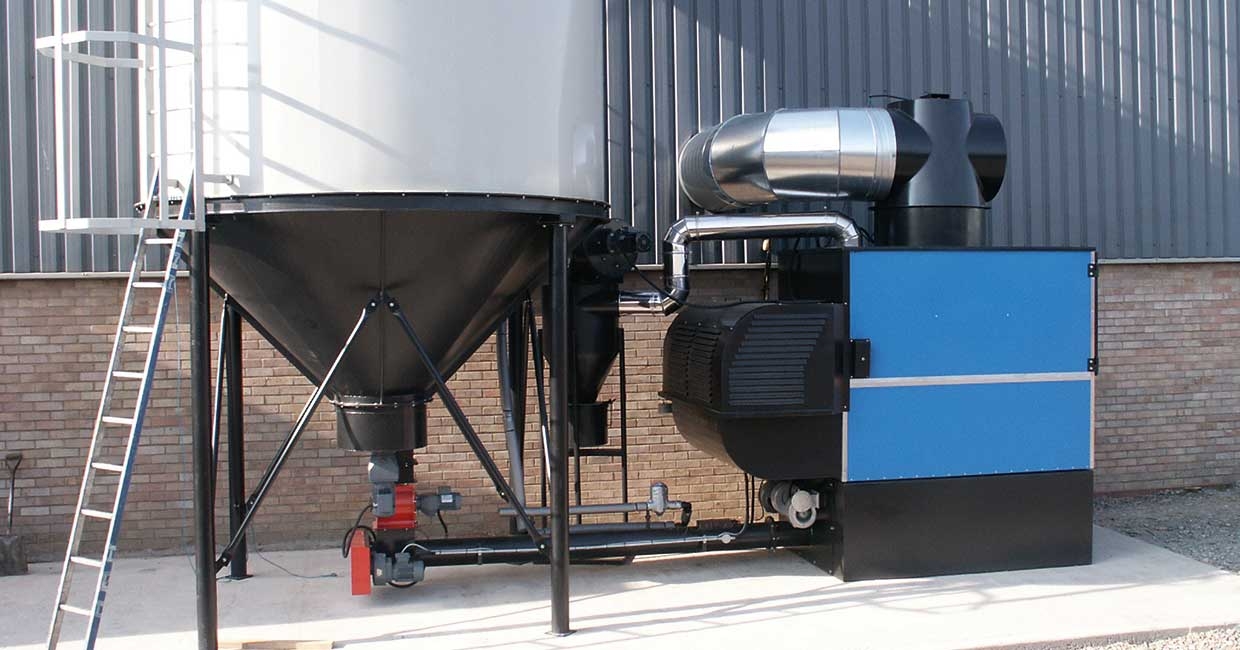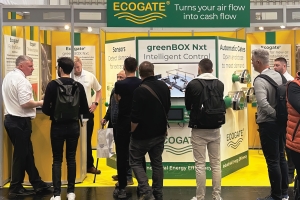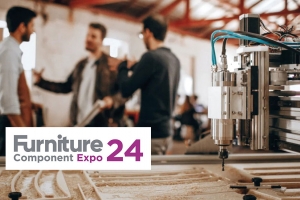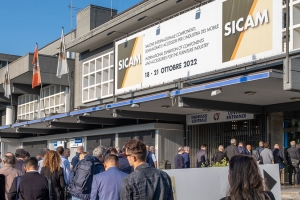Chris Franklin, Managing Director at Ranheat Engineering Ltd, one of the UK’s leading manufacturers of Industrial wood-waste burning equipment. Continues his series of articles exclusively for Furniture & Joinery production. This month he looks at new heating distribution systems for industrial wood fired heaters as opposed to boilers.
Despite record high temperatures for January 2023, with many French Alpine ski resorts being forced to close, how we heat our factories in the UK wood-working industry is still a prime concern.
The best way to save money on energy is to use less in the first place. But within our industry there exists special requirements for making things from wood and wood-based products.
Over the last decades there has been increased use of man-made boards as opposed to natural timber. But man-made boards come with low moisture contents and therefore can be hydroscopic. i.e., they can absorb moisture from the atmosphere so need to be stored dry.
Once made into an item that item needs to be kept dry and protected from inherent moisture present in the atmosphere particularly in the winter months. Higher external ambient winter temperatures do not mean that the air is dry, so heating within a wood-working factory especially, is needed.
Our industry also has other special needs when wood or wood-based products are cut or machined, fine dusts are produced, so the workforce needs protecting from these fine dusts, so a safe working environment is provided.
So, to meet COSHH regulations effective dust extraction systems from the wood working machinery is needed. This causes large amounts of air movement within the factory. The extraction system draws the air to a central filter to separate the wood-waste from the transport air.
If the extraction system is fitted with return air, then this extracted air is put back into the factory. Increasingly dust extraction manufacturers and suppliers are becoming more and more reluctant to fit return air systems, due to the risks this presents.
So, what are the risks? Well, the obvious one is if a cloth filter bag in the extraction system tears then dust gets introduced into the return air so gets blown into the factory. Next, what if there is a fire in the filter system? Flames and or smoke can be blown into the factory with disastrous results. This then requires automatic fire detection, automatic spark detection and extinguishing equipment fire dampers that shut automatically. Dust detection systems with automatic shutdown.
You can see why more and more suppliers and installers want to resist return air systems on dust extraction systems.
So, with no return air from the filter the extracted air must be replaced with fresh clean air from outside. To maintain a good working environment in the winter, this air needs to be heated.
With a boiler based or “wet” system an Air Handling unit can be used to heat the air by passing it over a heat exchanger, the factory can be heated using high level heat exchangers that take warm air from the ceiling and heat it and push it back down to floor level.
The problem with this is that the heating distribution system becomes very expensive which can put off installations in the smaller industrial units that many manufacturers within the UK woodworking industry occupy.
So Ranheat have come up with a simple solution to this by using the extensive air movement within a factory caused by the extraction system, not only to remove the harmful dust pneumatically but use this existing air movement to distribute the heat from a warm air based industrial wood fired heater.
The name for this method is “Smart air movement heating distribution”. Or SAMHD. So, what is Smart air movement heating distribution?
We all know that hot air rises and in a workplace the heat is needed at floor level, so the workforce can feel the benefit. Also, we want to prevent materials stored at high level in racking from drying out too much.
So, a SAMHD is a high-level axial fan that takes air into it then blows a portion of the air taken in horizontally at high level to the next SAMHD and at the same time blows a portion of the air vertically down towards the floor.
The motors can be three phase or single phase but increasingly energy saving EC external rotor motors are being used.
Simple to install, light in weight and no expensive heat exchangers and pipework. They are simple to re-locate if the factory layout changes. The SMAHDs are fitted with a thermostat so they don’t switch on until the air intake is at a pre-set temperature. The air passed to the next SMAHD quickly heats up and the next SMAHD turns on and passes it to the next and so on and on. If the wood-fired heater runs out of fuel, they automatically turn off on fall in temperature.
The industrial wood-fired heater with automatic feed system is mounted outside in a metal building adjacent to the storage silo and takes clean air from outside to be blown into the factory at high level and then the SMAHDs do the rest. Finally, air is also drawn down from the room by the extraction system to the hoods on the various machines. This warm air is then transported with the extracted dust and then released via the dust extraction filter.
The inlet ducting to the factory from the heater is fitted with a heat detecting fire damper as a safety precaution. The Industrial wood-fired heater is fitted with a summer winter divertor enabling the heater to blow warm air to atmosphere in the summer for continued disposal of the wood-waste when heating is not required.
For more details on how to cut energy consumption contact sales@ranheat.com
01604 750005










